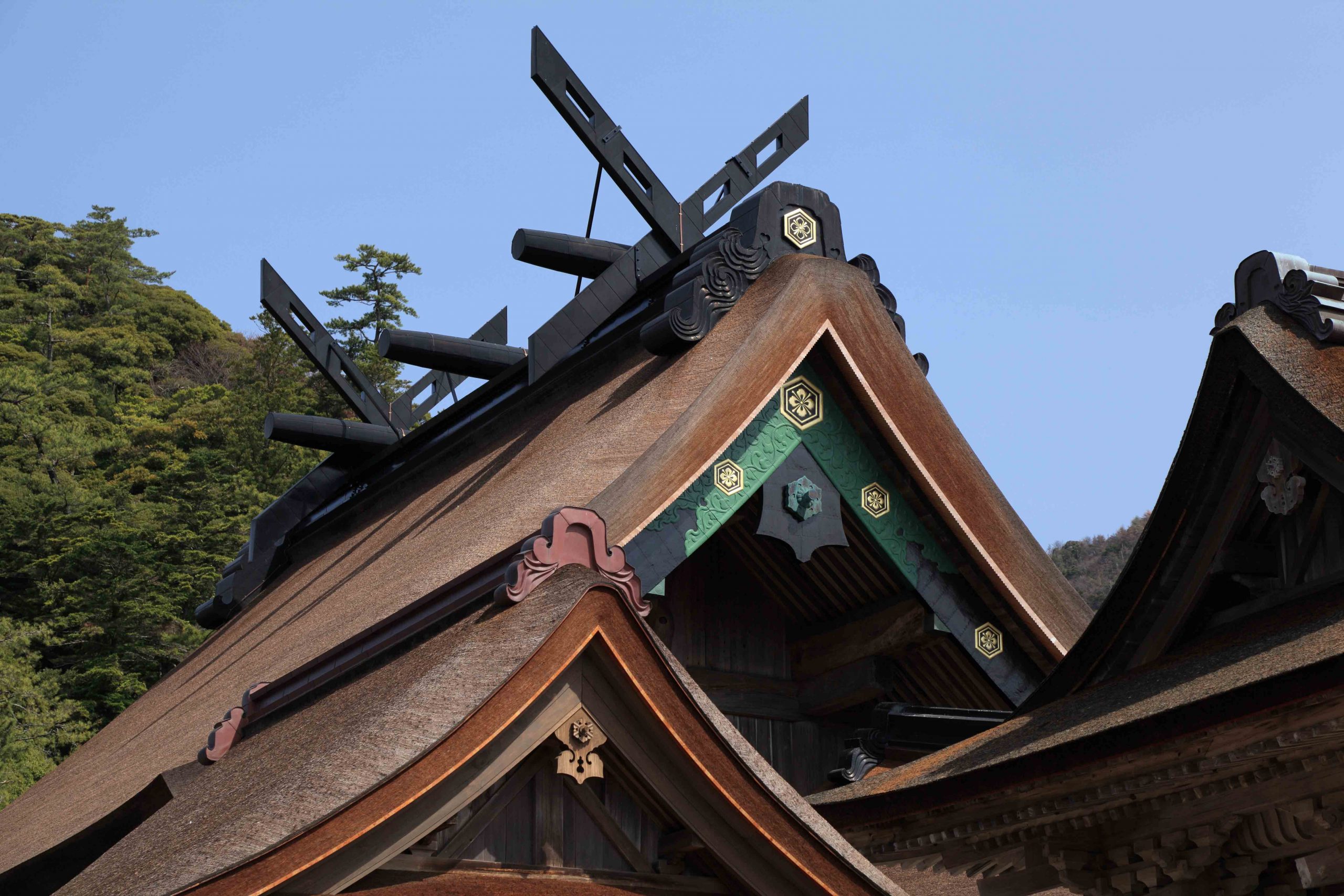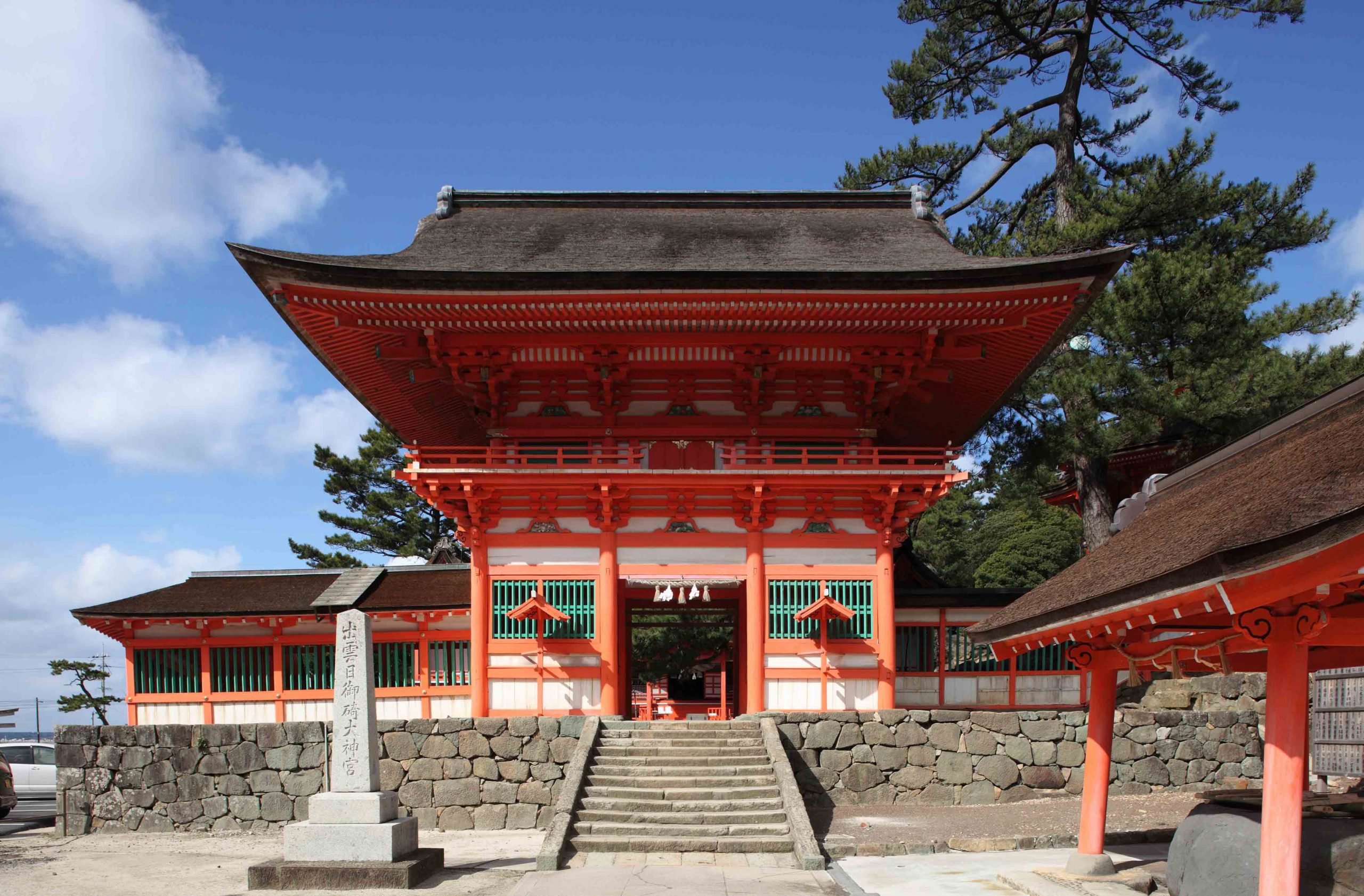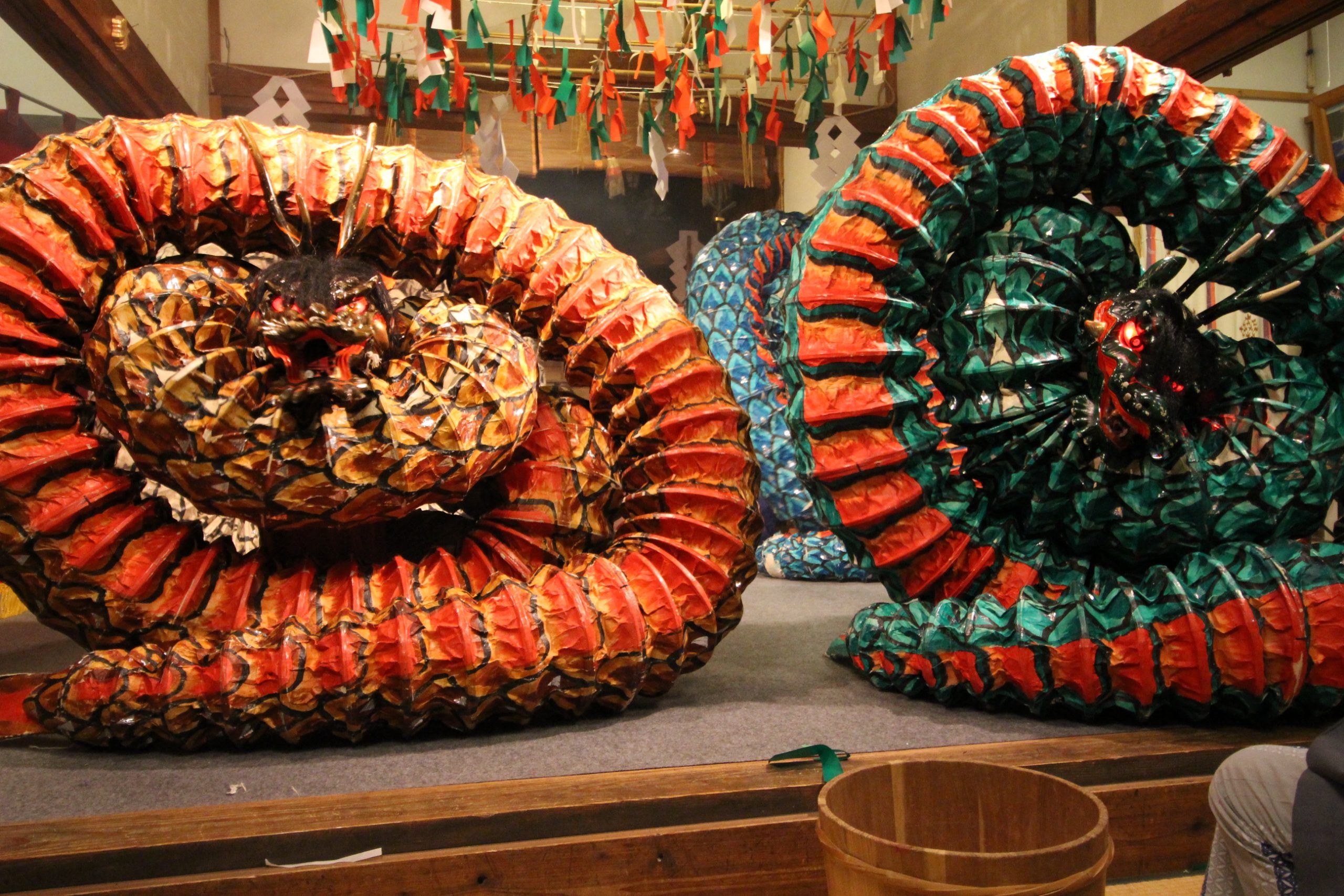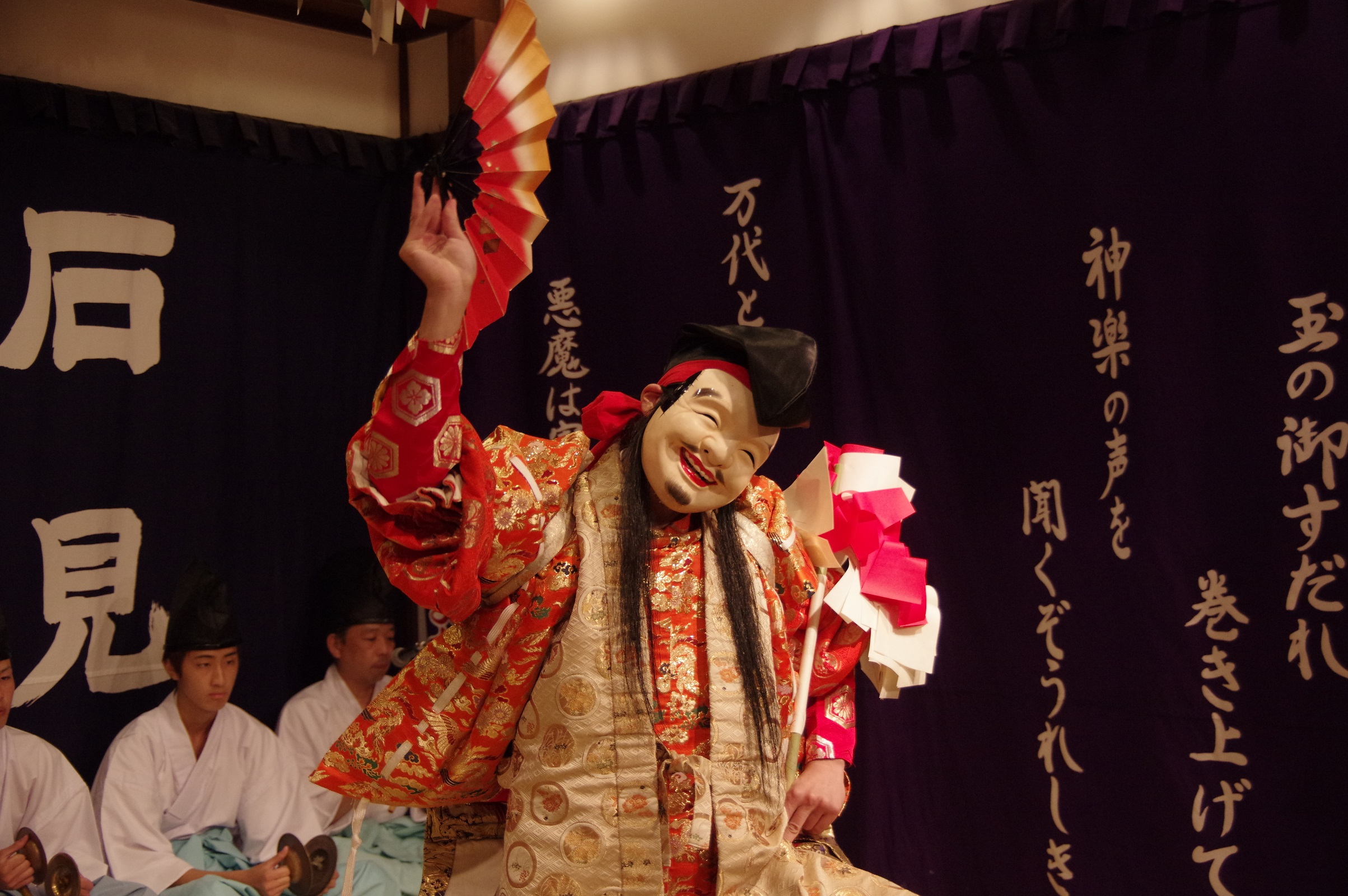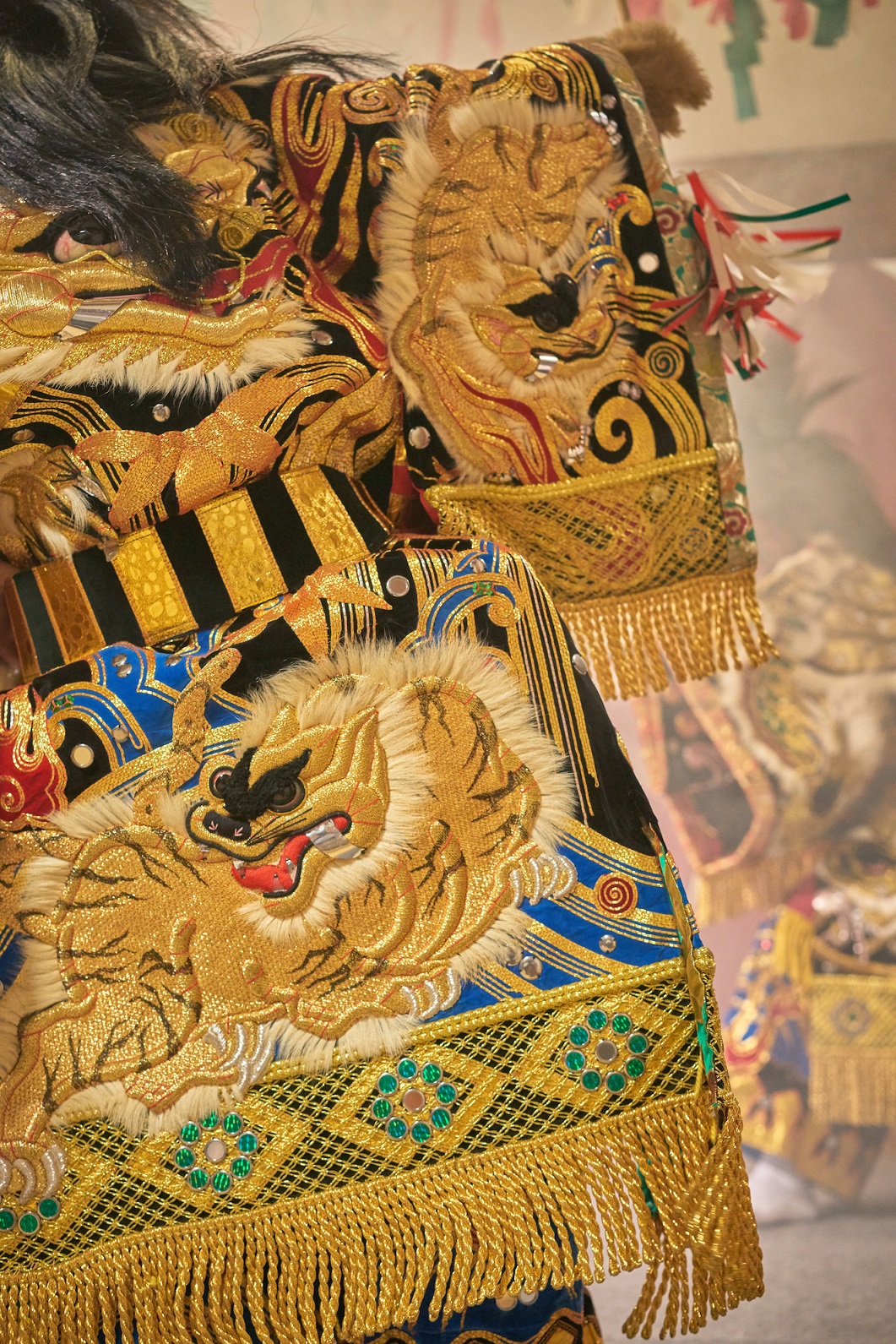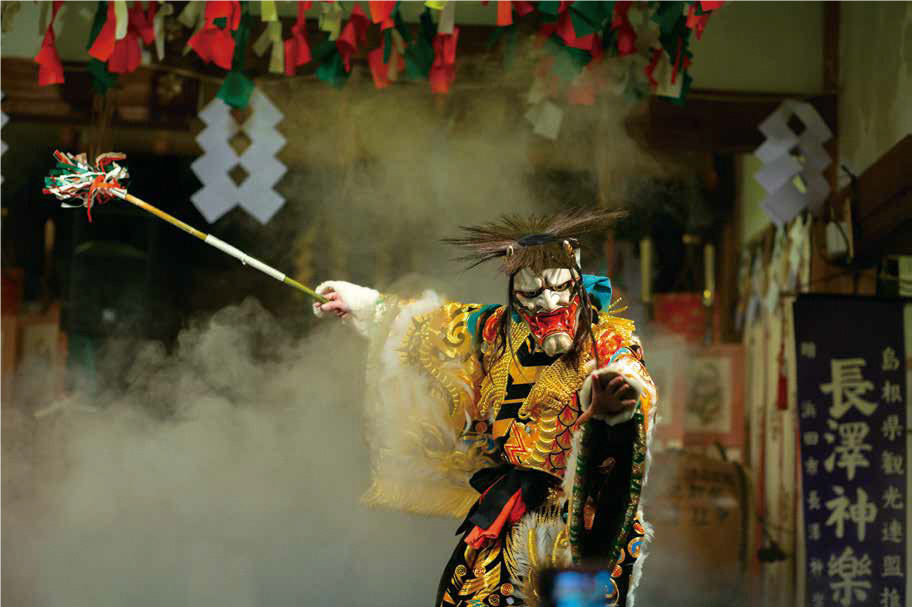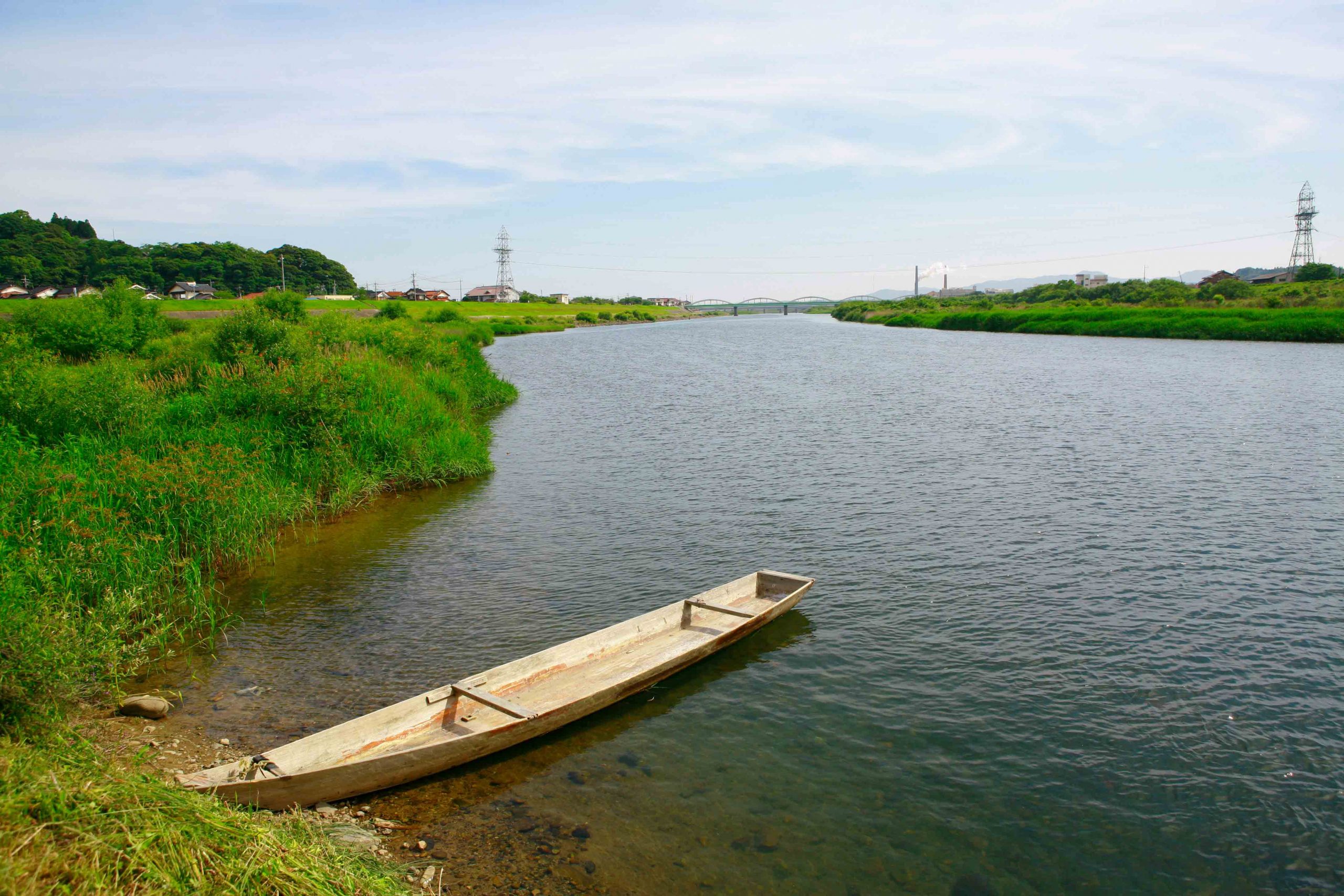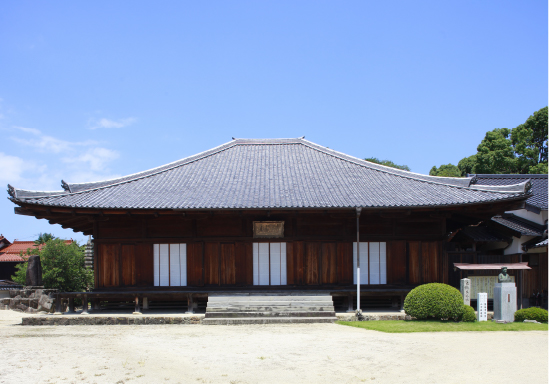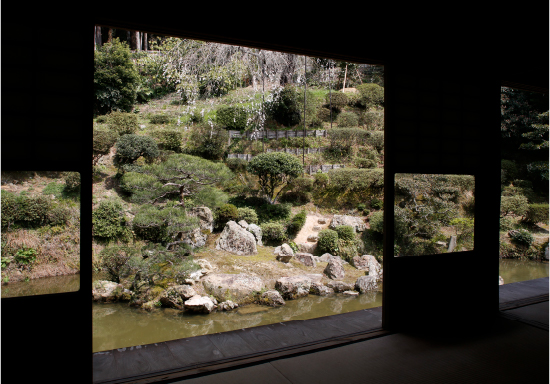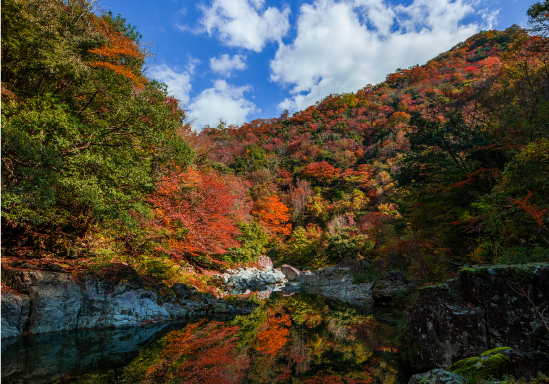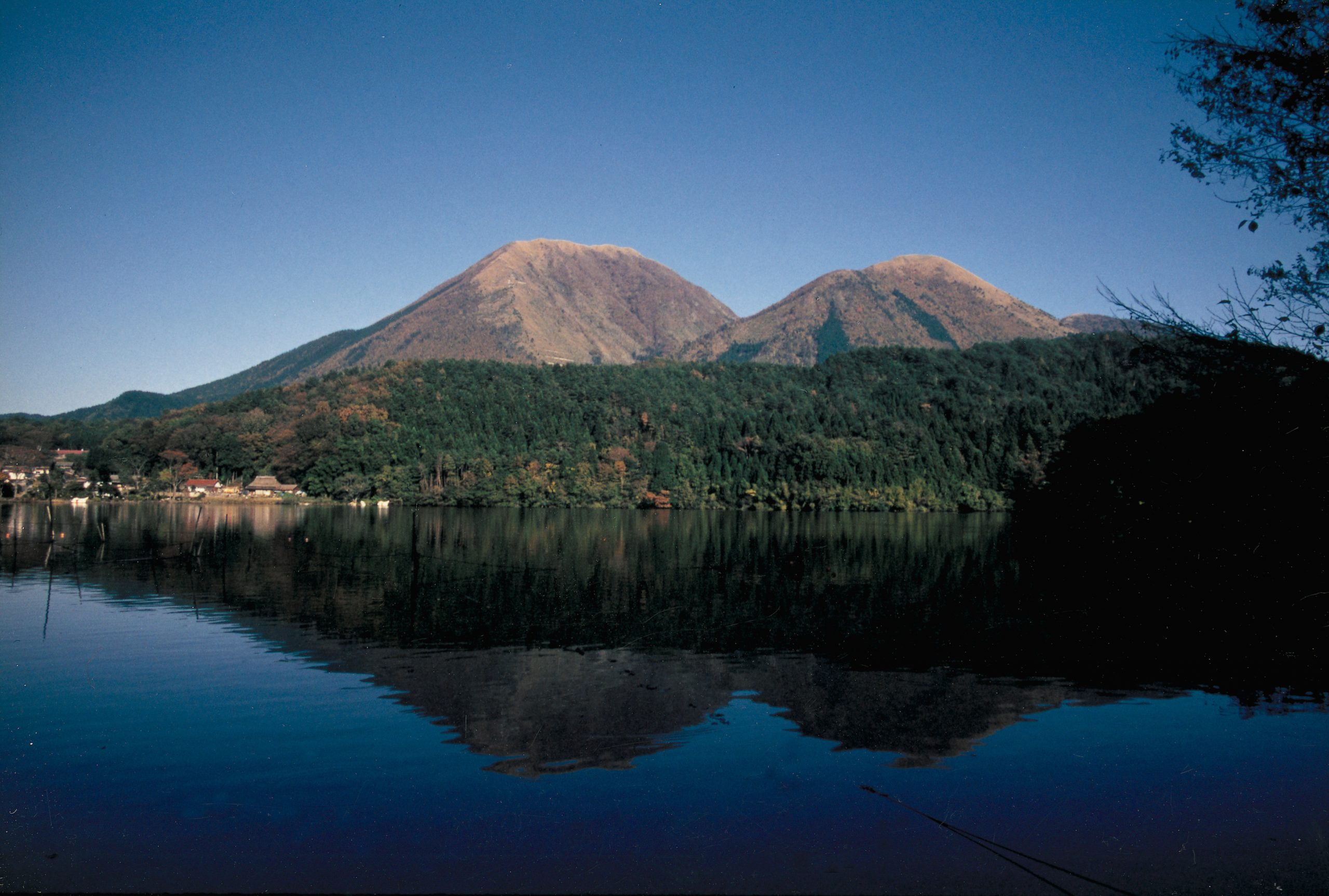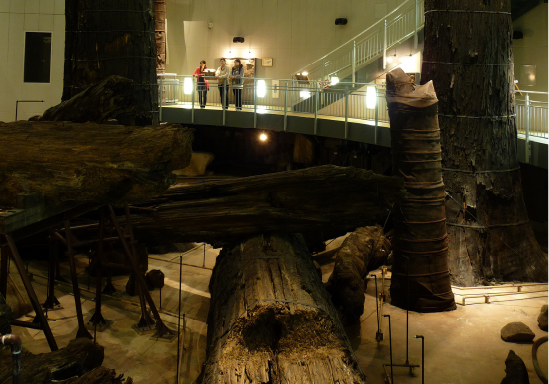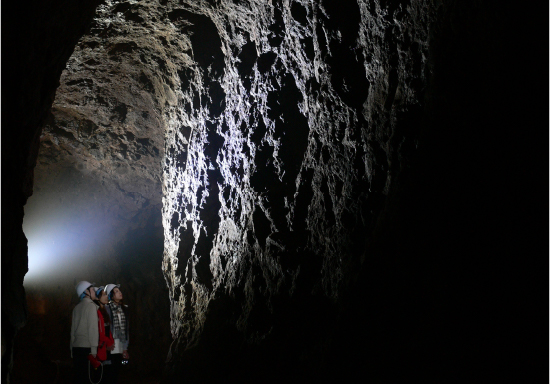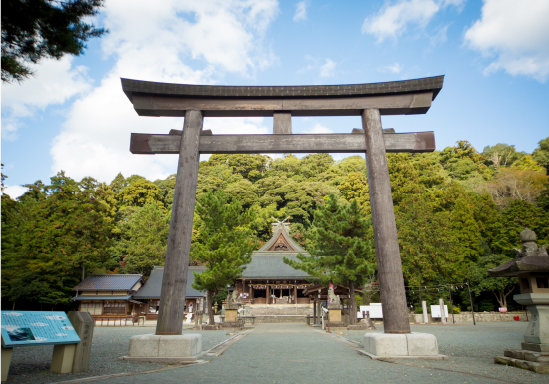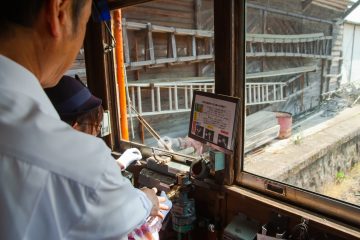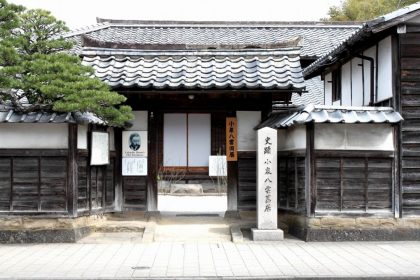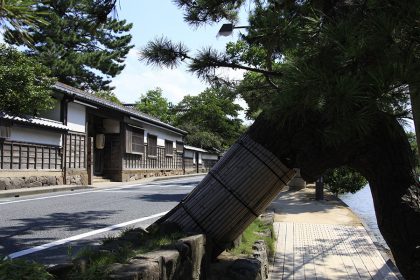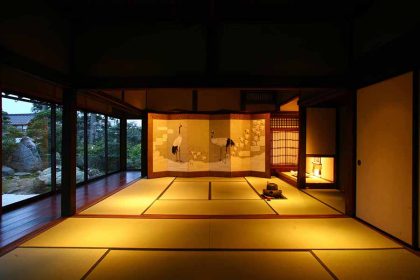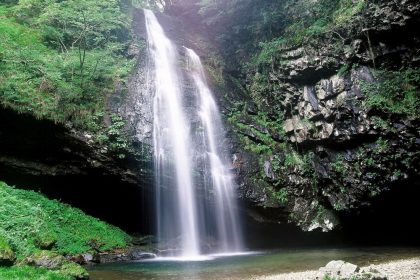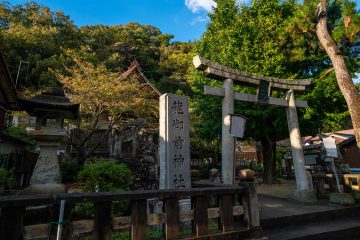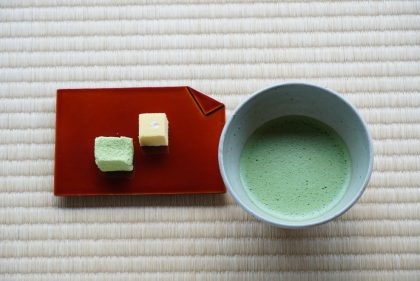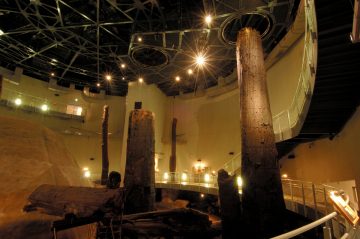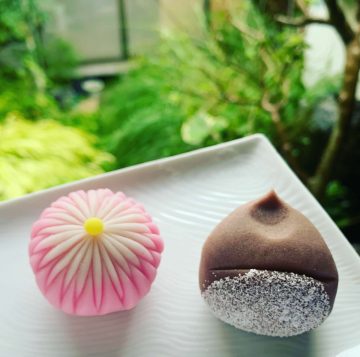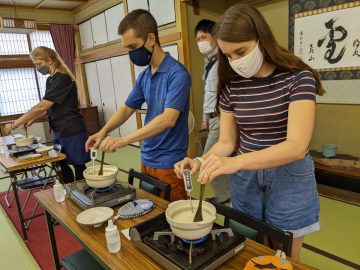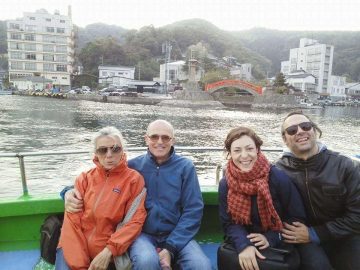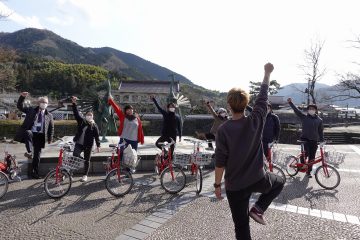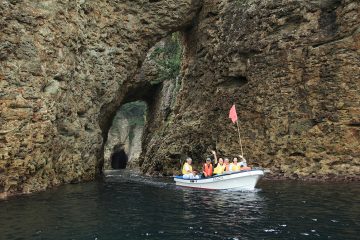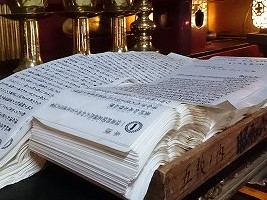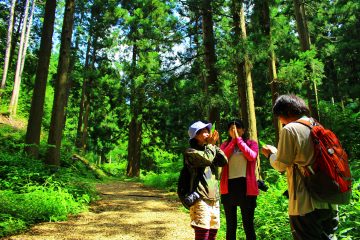Japan Heritage
What is a Japan Heritage?
It is the collection of stories that weave together the unique characteristics and histories of various regions. These narratives encapsulate Japan’s cultures and traditions, and are designated so by the country’s Agency for Cultural Affairs. Go checkout the official site for more detailed information.
Through seven Japan Heritage stories we will share with you the history and unique culture of Shimane Prefecture.
Tsuwano Then and Now -Exploring the Town of Tsuwano Through the One Hundred Landscapes of Tsuwano-
Tucked in the rolling hills of Shimane Prefecture lies the rice paddies and historic buildings of Tsuwano. While samurai warriors and ninja spies are a thing of the past in Japan, Tsuwano’s temples, nature, merchant houses, and shrines, remain largely untouched by the flow of time. Even the castle ruins remain; stone ramparts overlooking the valley for centuries without fail.The scenery and buildings invite imagination and inspiration wherever one looks, a muse for any artist. Looking into Tsuwano’s history, it seems this has always been the case. Kurimoto Satoharu, an artist and tea ceremony officiant from the 1800s, spent part of his youth in this mountain sanctuary, the sights and festivals growing his artistic vision. Today, we have a portal into his world over 150 years ago in the form of the “Hyakkeizu,” a collection of 100 paintings of the castle town. These snapshots reveal that his world and ours are surprisingly similar.
The Hyakkeizu depicts the legacy of Tsuwano as a castle domain. From detailed drawings of “Tonomachi street” where the samurai and district leaders lived, to the cherry blossom picnics at the Washibara Hachimangu Shrine, the viewers are treated to paintings that could easily be created from modern photos. In addition to the paintings of sweeping landscapes, Kurimoto also crafted art of special events and festivals. The Heron Dance, called “Sagimai” in Japanese, is painted with such precision that one can even see the differences between the two main costumes, one heron’s beak open and one closed, representing Yin and Yang. Even to this day, the Heron Dance is performed twice every summer as a way of warding off disease and bringing prosperity to this small corner of the world. Other paintings in the Hyakkeizu show “Yabusame,” a special ceremony for Horseback Archery. This deeply symbolic event is performed every year under the blooming cherry blossom trees at Japan’s oldest horse-riding arena. While over a century has passed, these events have remained, a testament to their cultural importance in the lives of people throughout the valley. Like the changing of the seasons, these celebrations are part of the life-cycle of Tsuwano, creating connections between people and their heritage.
The Hyakkeizu is a window to the past, but the town of Tsuwano and its people are living relics to the importance of tradition and the power of community. Even without castle lords, samurai, or kimono, the core of the town, its community, remains. Visitors can get a taste of what life was like and what it still remains to the residents of Tsuwano: a town untouched by time.
The Hyakkeizu depicts the legacy of Tsuwano as a castle domain. From detailed drawings of “Tonomachi street” where the samurai and district leaders lived, to the cherry blossom picnics at the Washibara Hachimangu Shrine, the viewers are treated to paintings that could easily be created from modern photos. In addition to the paintings of sweeping landscapes, Kurimoto also crafted art of special events and festivals. The Heron Dance, called “Sagimai” in Japanese, is painted with such precision that one can even see the differences between the two main costumes, one heron’s beak open and one closed, representing Yin and Yang. Even to this day, the Heron Dance is performed twice every summer as a way of warding off disease and bringing prosperity to this small corner of the world. Other paintings in the Hyakkeizu show “Yabusame,” a special ceremony for Horseback Archery. This deeply symbolic event is performed every year under the blooming cherry blossom trees at Japan’s oldest horse-riding arena. While over a century has passed, these events have remained, a testament to their cultural importance in the lives of people throughout the valley. Like the changing of the seasons, these celebrations are part of the life-cycle of Tsuwano, creating connections between people and their heritage.
The Hyakkeizu is a window to the past, but the town of Tsuwano and its people are living relics to the importance of tradition and the power of community. Even without castle lords, samurai, or kimono, the core of the town, its community, remains. Visitors can get a taste of what life was like and what it still remains to the residents of Tsuwano: a town untouched by time.
Izumo Tatara Chronicle -A Thousand Years of Iron-
As the fire rises from the clay walls of the furnace, the “murage” (manager of the iron works) watches and instructs his workers on how to adjust the air, when to add the charcoal, and where to add the iron sand. Called the “Path of Fire” these adjustments that he makes to the fire are based on his intuition and without the help of modern instruments. This will continue for three days and three nights until the iron is ready. That is the way of the traditional “tatara seitetsu”, iron making.
1400 years ago, in the Izumo region of Shimane, locals found that they could make iron by melting iron sand with charcoal found in the local mountains. According to mythology, the deity Kanayago came down from the heavens on a white heron and landed upon a katsura tree where she taught the people the secrets to “tatara seitetsu”. It has become a tradition that still exists today only in Okuizumo.
From the later half of the Edo Period to the Meiji period the local industry was at its peak, and it was estimated that 80% of the iron and steel being produced in Japan at the time was coming from Shimane mountains. The iron trade brought outside cultural influences from places all over Japan. The folk song “Yasugi-bushi” was born from the influence of folk songs sung by boatmen who came from various regions to transport iron. Other influences also created a refined local culture comparable to Kyoto. Owners of ironworks, who made their fortune in the industry, built luxurious tea houses and gardens in their own homes which they used to entertain the lords of the domain, including the famous Matsudira Harusato aka “Fumai.” But the introduction of western style blast furnaces in the 1900s brought a decline in the traditional “tatara seitetsu” iron furnaces. And in 1925, the last of the traditional iron furnaces closed.
In 1977, the Nittoho Tatara was formed and they reopened an iron works in Okuizumo. Currently it is the only place in Japan that produces iron and steel using the traditional methods and the only place that still produces “tamahagane” steel which is essential to make Japanese swords. Tatara has carved its way into the landscape and influenced a part of the local culture. The early history of tatara seitetsu can also be interpreted through the popular Iwami Kagura story “Yamata no Orochi.” Perhaps you could say that this area has a special connection with tatara, after all this is the place of “go-en.”
1400 years ago, in the Izumo region of Shimane, locals found that they could make iron by melting iron sand with charcoal found in the local mountains. According to mythology, the deity Kanayago came down from the heavens on a white heron and landed upon a katsura tree where she taught the people the secrets to “tatara seitetsu”. It has become a tradition that still exists today only in Okuizumo.
From the later half of the Edo Period to the Meiji period the local industry was at its peak, and it was estimated that 80% of the iron and steel being produced in Japan at the time was coming from Shimane mountains. The iron trade brought outside cultural influences from places all over Japan. The folk song “Yasugi-bushi” was born from the influence of folk songs sung by boatmen who came from various regions to transport iron. Other influences also created a refined local culture comparable to Kyoto. Owners of ironworks, who made their fortune in the industry, built luxurious tea houses and gardens in their own homes which they used to entertain the lords of the domain, including the famous Matsudira Harusato aka “Fumai.” But the introduction of western style blast furnaces in the 1900s brought a decline in the traditional “tatara seitetsu” iron furnaces. And in 1925, the last of the traditional iron furnaces closed.
In 1977, the Nittoho Tatara was formed and they reopened an iron works in Okuizumo. Currently it is the only place in Japan that produces iron and steel using the traditional methods and the only place that still produces “tamahagane” steel which is essential to make Japanese swords. Tatara has carved its way into the landscape and influenced a part of the local culture. The early history of tatara seitetsu can also be interpreted through the popular Iwami Kagura story “Yamata no Orochi.” Perhaps you could say that this area has a special connection with tatara, after all this is the place of “go-en.”
The Sunset in the Sacred Land of Izumo -Sunset Created by the Gods-
The sound of the gentle rolling waves crashing into the sandy shore, the sound of birds in the distance, the sky burns orange as the sun makes its descent into the sea that stretches as far as the eye can see. Maybe there is another world beyond the sea that the sun sinks into, maybe it is the world of the gods.
In ancient times, from the capital Yamato (current day Nara prefecture), the sunset was seen in the northwest direction or towards the lands of Izumo. In the Nihon Shoki and Kojiki, Izumo was mentioned as “the place that connects to the other world beyond the seas that the sun sinks into”, and was the setting place for many myths.
There are many shrines located along the coastline from Inasa-no-hama to the tip of the Hinomisaki cape. On the beautiful white sandy beach of Inasa-no-hama, which is said to be the setting of the Kuniyuzuri Myth, there is a small island on the shore called Bentenjima. It is there, where the gods first arrive when they make their yearly visit for their annual meeting at Izumo Taisha Grand Shrine, also known as Ame no Hisumi no Miya, the sunset palace. The white sandy beach shoreline quickly becomes rough and rocky with steep cliffs as you head north to the tip of Hinomisaki Cape. The tallest masonry lighthouse, Hinomisaki lighthouse sits at the tip of the cape and looks out over the horizon. Just south of the lighthouse is Hinomisaki Shrine, which is dedicated to the god Susanoo who controls the sea and the god Amaterasu who usually represents the sunrise, but here the sunset. And in the forests nearby is a shrine dedicated to Tsukuyomi who is the god of the night. Combined they are the three main Shinto gods known as Mihashiranousunomiko and are said to be there to watch over the sunset.
The people of Izumo saw a very different sunset from the people who lived in the ancient capital Yamato and must have felt that the beauty of the landscape and sunset were indeed the work of the gods. In the local dialect there is a greeting “banjimashite” which is used during the time of day before the evening. It is not a word you would hear commonly anywhere else in Japan, which shows that the people of Izumo must have had a special connection with the sunset.
In ancient times, from the capital Yamato (current day Nara prefecture), the sunset was seen in the northwest direction or towards the lands of Izumo. In the Nihon Shoki and Kojiki, Izumo was mentioned as “the place that connects to the other world beyond the seas that the sun sinks into”, and was the setting place for many myths.
There are many shrines located along the coastline from Inasa-no-hama to the tip of the Hinomisaki cape. On the beautiful white sandy beach of Inasa-no-hama, which is said to be the setting of the Kuniyuzuri Myth, there is a small island on the shore called Bentenjima. It is there, where the gods first arrive when they make their yearly visit for their annual meeting at Izumo Taisha Grand Shrine, also known as Ame no Hisumi no Miya, the sunset palace. The white sandy beach shoreline quickly becomes rough and rocky with steep cliffs as you head north to the tip of Hinomisaki Cape. The tallest masonry lighthouse, Hinomisaki lighthouse sits at the tip of the cape and looks out over the horizon. Just south of the lighthouse is Hinomisaki Shrine, which is dedicated to the god Susanoo who controls the sea and the god Amaterasu who usually represents the sunrise, but here the sunset. And in the forests nearby is a shrine dedicated to Tsukuyomi who is the god of the night. Combined they are the three main Shinto gods known as Mihashiranousunomiko and are said to be there to watch over the sunset.
The people of Izumo saw a very different sunset from the people who lived in the ancient capital Yamato and must have felt that the beauty of the landscape and sunset were indeed the work of the gods. In the local dialect there is a greeting “banjimashite” which is used during the time of day before the evening. It is not a word you would hear commonly anywhere else in Japan, which shows that the people of Izumo must have had a special connection with the sunset.
Merchant Ships Carrying Goods, Culture, and Big Dreams (Hokkaido, Aomori, Akita, Yamagata, Niigata, Toyama, Ishikawa, Fukui, Kyoto, Osaka, Hyogo, Tottori, Shimane, Okayama, Hiroshima, Kagawa Prefectures)
The ships were fragile, the voyages fraught with danger. Yet for more than a century the kitamae-bune merchant ships traveled between Hokkaido and Osaka along the Sea of Japan, drawn by the magnificent fortunes that could be earned from their trade. In Shimane, iron production flourished and became one of the main goods traded with kitamae-bune sailors. The old trading port Tonoura in Hamada City, still retains its atmosphere from back in the day when the port was the largest trading port owned by the Hamada Clan.
The kitamae-bune were effectively trading companies on the sea. From around the mid-18th century to the beginning of the 20th century they bought and sold goods at each port of call ranging from salt, herring, and rice to paper, knives, and clothing. A kitamae-bune large enough to carry about 150 tons of rice could earn the modern equivalent of 60 million to 100 million yen, or about $500,000 to $900,000 USD, on a single voyage. It is easy to understand why so many sailors sought to rise through the ranks of the crew and eventually save enough money to buy their own ship.
The kitamae-bune were purveyors of culture as well as goods, spreading folk songs, performing arts, food, and customs along their route. Sailors would learn local songs at a port, for example, which they would then sing at their next stop. As these songs traveled, they developed into new folk music and performing arts that live on to this day. The folk song “Izumo-bushi”, which originated in Shimane, was brought by the sailors of kitamae-bune to the far Akita prefecture and became the base for their folk song “Akita-funakata-bushi.”
The kitamae-bune were effectively trading companies on the sea. From around the mid-18th century to the beginning of the 20th century they bought and sold goods at each port of call ranging from salt, herring, and rice to paper, knives, and clothing. A kitamae-bune large enough to carry about 150 tons of rice could earn the modern equivalent of 60 million to 100 million yen, or about $500,000 to $900,000 USD, on a single voyage. It is easy to understand why so many sailors sought to rise through the ranks of the crew and eventually save enough money to buy their own ship.
The kitamae-bune were purveyors of culture as well as goods, spreading folk songs, performing arts, food, and customs along their route. Sailors would learn local songs at a port, for example, which they would then sing at their next stop. As these songs traveled, they developed into new folk music and performing arts that live on to this day. The folk song “Izumo-bushi”, which originated in Shimane, was brought by the sailors of kitamae-bune to the far Akita prefecture and became the base for their folk song “Akita-funakata-bushi.”
A Mythical World Where Gods and Demons are Alive -Kagura, Passed Down Through the Generations in Iwami-
As the night falls, the locals gather at their local shrine like fireflies drawn to the light. The sound of flutes echoes into the night sky and the sounds of the drums shake the earth below. The shrine fills with music and singing that enchants the audience as they wait for the hero to make his final entrance into the light. The musicians and performers tell the stories of the gods that explain our world. These performances are passed down through generations and have become a part of the daily life of the locals.
The roots of Iwami Kagura can be found in Oomoto Kagura which is a part of the Oomoto faith. According to the Oomoto faith, once every couple of years, Shinto priests in the area would gather at each village and hold ceremonies with “Oomoto Kagura.” In the Meiji period, Shinto rituals that included kagura performed by priests were banned, but places in the mountains continued to practice such traditions; places in the mountains like the Iwami area. In 1979 “Oomoto Kagura” became designated as an Intangible Folk Cultural Property of Japan.
In 1970, at the main stage of the World Expo ’70 in Osaka, Iwami Kagura would receive recognition throughout Japan, sparking an international fascination with this traditional Shinto ritual. It was there that “Orochi”, a performance based on the Yamata no Orochi myth gained international prominence. The myth features a giant eight-headed serpent, which up until then was usually performed with only two heads. At the expo for the first time it was performed with all eight heads, and this evolution stunned audience and made it one of the staple performances of Iwami Kagura. With its new-found popularity, Iwami Kagura troupes started to receive requests to perform all over Japan and even overseas.
In the Iwami Region there are currently over 130 active troupes and over 30 different performances. While preserving the tradition and its traditional ways, Iwami Kagura troupes have also adopted modern devices such as sound effects, lighting, and even pyrotechnics as a way to gain the attention of modern-day audiences. But their costumes are still hand-made by artisans using traditional methods local to the region. In the Iwami Region there is a special type of Japanese paper called “sekishu-banshi” which is known for its durability. Layered on top of clay molds using persimmon tannin, sekishu-banshi paper becomes a light but durable mask which will then have its details painted by a local artisan. The body of the serpents used in the “Orochi” performance are also made from the same sekishu-banshi paper, making the costumes light enough for performers to be able to make the quick dynamic movements associated with Iwami Kagura.
The days of Kagura being restricted to being performed by priests and for special events are gone. Now, it is the gathering of the locals, in front of the gods, in thanks for the good harvest and peaceful current year and in prayer for the upcoming year. It is enjoying the evening and festivities together that makes Iwami Kagura so delightful to the locals. And to them it is more than just a form of traditional theater, it is a part of their everyday life.
The roots of Iwami Kagura can be found in Oomoto Kagura which is a part of the Oomoto faith. According to the Oomoto faith, once every couple of years, Shinto priests in the area would gather at each village and hold ceremonies with “Oomoto Kagura.” In the Meiji period, Shinto rituals that included kagura performed by priests were banned, but places in the mountains continued to practice such traditions; places in the mountains like the Iwami area. In 1979 “Oomoto Kagura” became designated as an Intangible Folk Cultural Property of Japan.
In 1970, at the main stage of the World Expo ’70 in Osaka, Iwami Kagura would receive recognition throughout Japan, sparking an international fascination with this traditional Shinto ritual. It was there that “Orochi”, a performance based on the Yamata no Orochi myth gained international prominence. The myth features a giant eight-headed serpent, which up until then was usually performed with only two heads. At the expo for the first time it was performed with all eight heads, and this evolution stunned audience and made it one of the staple performances of Iwami Kagura. With its new-found popularity, Iwami Kagura troupes started to receive requests to perform all over Japan and even overseas.
In the Iwami Region there are currently over 130 active troupes and over 30 different performances. While preserving the tradition and its traditional ways, Iwami Kagura troupes have also adopted modern devices such as sound effects, lighting, and even pyrotechnics as a way to gain the attention of modern-day audiences. But their costumes are still hand-made by artisans using traditional methods local to the region. In the Iwami Region there is a special type of Japanese paper called “sekishu-banshi” which is known for its durability. Layered on top of clay molds using persimmon tannin, sekishu-banshi paper becomes a light but durable mask which will then have its details painted by a local artisan. The body of the serpents used in the “Orochi” performance are also made from the same sekishu-banshi paper, making the costumes light enough for performers to be able to make the quick dynamic movements associated with Iwami Kagura.
The days of Kagura being restricted to being performed by priests and for special events are gone. Now, it is the gathering of the locals, in front of the gods, in thanks for the good harvest and peaceful current year and in prayer for the upcoming year. It is enjoying the evening and festivities together that makes Iwami Kagura so delightful to the locals. And to them it is more than just a form of traditional theater, it is a part of their everyday life.
Experience Masuda, A Masterpiece of Medieval Japan -The Time for Masuda has Come Again-
Masuda City is located near China and the Korean Peninsula across the Sea of Japan. During the Middle Ages (400 to 800 years ago), the city actively traded on the Sea of Japan, taking advantage of its geography and local resources such as timber and minerals brought by the Chugoku Mountains. As Masuda achieved economic prosperity, it also developed its own unique culture under the influence of East Asia. Even today, the town still retains its medieval appearance, and the many cultural assets and works of art tell the story of medieval Japan.
Immortalized in History by the Volcanoes of Iwami -Take a Journey and Discover the "Jomon-no-Mori" and "Shirogane-no-Yama"-
A cool light breeze leads down the staircase and onto an underground viewing deck that looks over the remnants of giant trees. Some of the tallest giant trees found stand 12.5 meters high with a trunk diameter of 2.5 meters. Buried by a volcanic eruption 4000 years ago, they remained in slumber underground beneath our feet until they were recently found.
Japan is a country of volcanoes and one of the most well-known would have to be Mt. Fuji, which is still an active volcano. While volcanic eruptions can be very dangerous, they also enrich the land and the Iwami region is proof of just that. 15 million years ago, 1.5 million years ago, and 4000 years ago, three generations of volcanic eruptions created the biggest impact on the region and are the reason for the many natural blessings it has to offer.
The first series of eruptions came from a submarine volcano and after forming the region it also left vast reserves of mineral ore deposits which would be mined many millions of years later and become a major industry in the region through today. During the next generation of eruptions, 1.5 million years ago, magma from the ground gushed out hot liquid containing silver into the whole region, changing rocks into silver ore. This would support the local silver mining industry that survived for 400 years starting in the 16th century and became Japan’s largest producing silver mines. At its peak, Japan was producing 1/3 of the world’s silver and a majority of that silver was coming out from these mines. The Iwami region became known as the “Silver Mine Kingdom” on European maps. The last generation of eruptions happened during the Jomon period, 4000 years ago, when it buried a forest of giant trees that once populated the region. As time went by after the eruptions, the land became a very suitable environment for living. During the Meiji period, it was a pasture for 3000 cattle and the volcanic soil was perfect for growing the local speciality, Sanbe soba. While the eruptions of volcanoes are dangerous, they also enrich the land that we live on and one good example is the Iwami region.
Japan is a country of volcanoes and one of the most well-known would have to be Mt. Fuji, which is still an active volcano. While volcanic eruptions can be very dangerous, they also enrich the land and the Iwami region is proof of just that. 15 million years ago, 1.5 million years ago, and 4000 years ago, three generations of volcanic eruptions created the biggest impact on the region and are the reason for the many natural blessings it has to offer.
The first series of eruptions came from a submarine volcano and after forming the region it also left vast reserves of mineral ore deposits which would be mined many millions of years later and become a major industry in the region through today. During the next generation of eruptions, 1.5 million years ago, magma from the ground gushed out hot liquid containing silver into the whole region, changing rocks into silver ore. This would support the local silver mining industry that survived for 400 years starting in the 16th century and became Japan’s largest producing silver mines. At its peak, Japan was producing 1/3 of the world’s silver and a majority of that silver was coming out from these mines. The Iwami region became known as the “Silver Mine Kingdom” on European maps. The last generation of eruptions happened during the Jomon period, 4000 years ago, when it buried a forest of giant trees that once populated the region. As time went by after the eruptions, the land became a very suitable environment for living. During the Meiji period, it was a pasture for 3000 cattle and the volcanic soil was perfect for growing the local speciality, Sanbe soba. While the eruptions of volcanoes are dangerous, they also enrich the land that we live on and one good example is the Iwami region.






















